CALDWELL (Day 6 - part 2)
The tour continued... the building was huge!
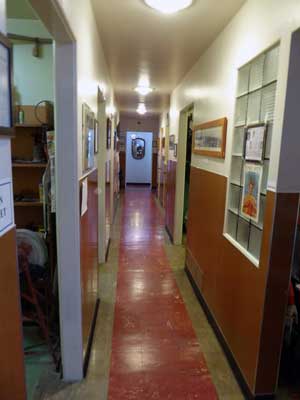

The nursery exhibit:


(left) The iron crib is from the 1930s. By today's safety standards, the rungs are too far apart and it's coated with a lead-based paint.


The baby carriage is from the 1920s ... and some of the books go as far back as 1885
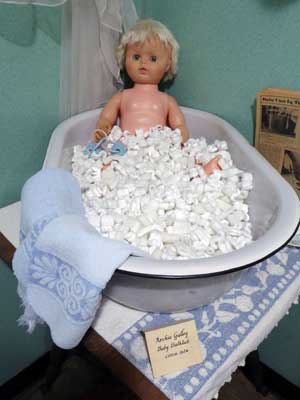
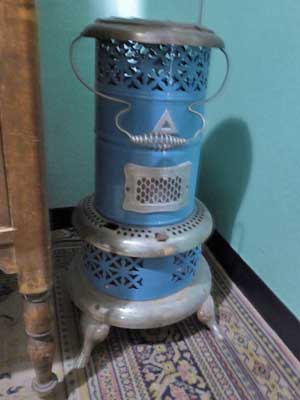
An enameled bathtub from 1926 ... a heater
Music devices:


(right) An Edison phonographic cylinder player
Phonograph cylinders, simply called "records" in their day (1896-1916), were the earliest commercial medium for both recording and playing back of sound. The hollow cylindrical objects had an audio recording engraved on their outside surface and were played on a mechanical phonograph. Beginning in 1889, prerecorded wax cylinders were marketed. These were of songs, instrumental music or humorous monologues and were around two minutes long. Originally made of soft wax, they would wear out after being played only a few dozen times. They could, however, be shaved down and have a new recording put on them. Over the years, the type of wax was improved and hardened, so that cylinders could be played with good quality over 100 times. At first, they were only used in jukeboxes, but soon people bought them for home use. They started to become replaced in the 1910s when a competing record system was invented.
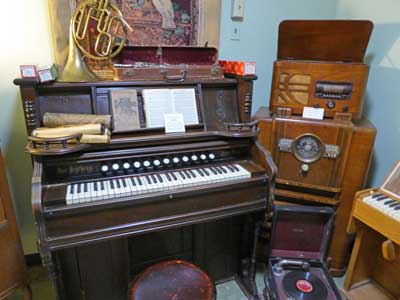



A desk with drawers specifically made to hold records
A bedroom:


The bed is from the 1870s or earlier ... and chamber pot is from the early 1900s.


The old x-ray room was set up as a parlor:
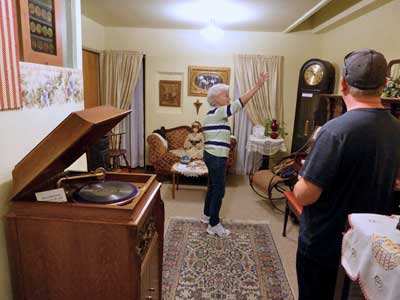

Lita points to the ceiling where an indentation still remains from the x-ray equipment.
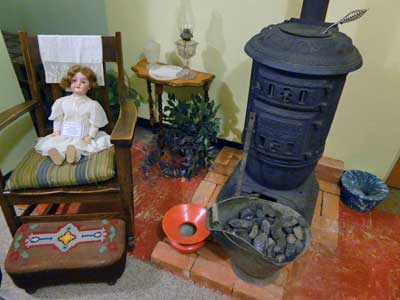

(right) The grandfather clock is from 1900.

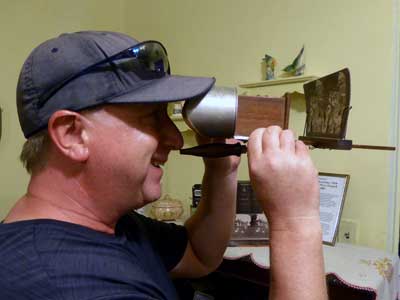
The stereoscope (also stereopticon or stereo viewer) was one of the country's most popular forms of entertainment in the late 1800s. It was first patented by Sir Charles Wheatstone in 1838, using simple drawings. Photography was invented several years later. The one here was made by Oliver Wendell Holmes in 1881. How it works: two photos were taken at slight different viewpoints using a camera mounted on a tripod with a sliding bar. After the first picture was taken, the camera was moved about 7 centimeters (corresponding to the spacing of the eyes) along the bar and a second one was taken. These were mounted next to each other and viewed through a set of lenses. This created the illusion of depth.
The old waiting room was now a hat display room:


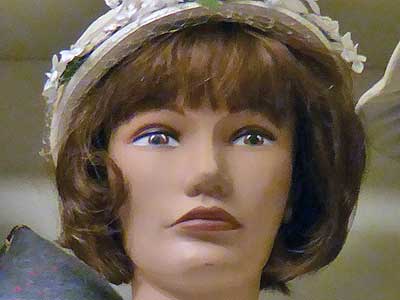

(left) She is so "normal" looking that I had to wonder if she was just a fictional person or actually created in somebody's specific image?


The hallway had a display of Native American artifacts:

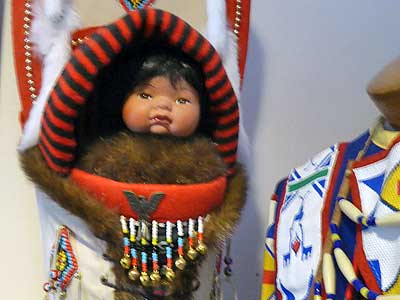
Sacagawea (or Sacajawea) was born in 1788 or 1789 and grew up in what is now Idaho (near the Montana border). When she was about 12 years old, she and several other children were taken captive by a neighboring tribe. She was sold into a non-consensual marriage to a Quebecois trapper. He had also bought another young Shoshone girl for a wife. In 1804, Captains Meriwether Lewis and William Clark hired him for their expedition up the Missouri River. Sacajawea went along, pregnant with her first child at the time. While she has been depicted as a guide, she mostly worked as an interpreter. However, as a woman with a baby, the peaceful intent of the expedition was shown (women never accompanied a war party in this area). Clark ended up adopting her son in order to give him a 'proper' education. It is believed she died around the age of 25.

The toy collection:

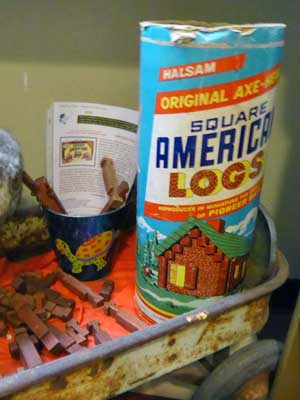



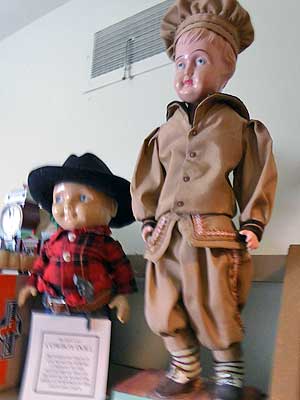
(right) The doll on the right is from around 1909.


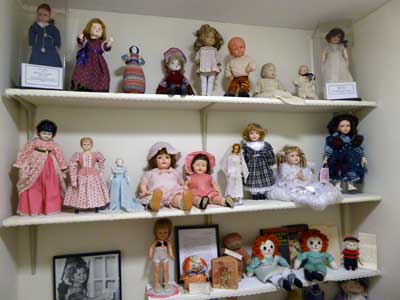

A laundry exhibit:



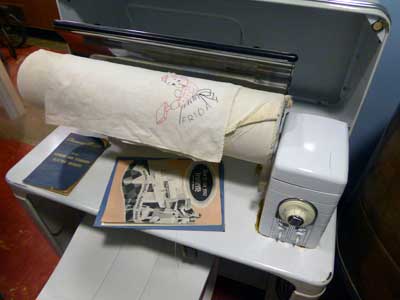
A Maytag washer ... and an ironing press


return • continue

